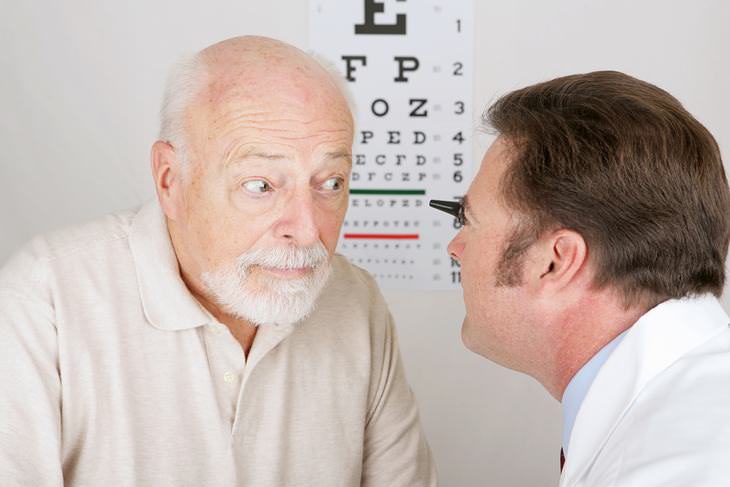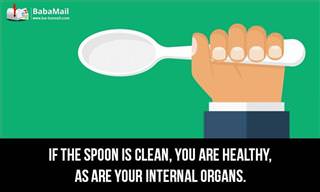1. Pain and stiffness in muscles

Loss of muscle cells usually causes a feeling of weakness in your muscles. Therefore, if you have problems when getting up from a chair, brushing your hair, lifting an object or you keep dropping things on the floor, you probably suffer from muscular dystrophy. You may also notice contractures, reduced flexibility, and frequent muscle pain. This indicates that something is wrong with your muscles. Furthermore, symptoms such as prolonged spasms, as well as the stiffening and tightness of arm and leg muscles may be a sign of myotonia - this is a serious condition that requires medical treatment.
2. Enlarged calves
If you have enlarged calf muscles it may be a sign of Duchenne muscular dystrophy. This disease usually occurs at an early age in boys and worsens very quickly. If you do suffer from the Duchenne disorder, your calf muscles are often affected first because they are used a lot when you try to stabilize your body. In this case, what happens is that the original muscles eventually get replaced by fat and scar tissue.
3. Curved spine

Are your muscles strong enough to hold your spine straight? You may be suffering from a poor posture that can lead to scoliosis with time. Because of this condition, your spine will curve to either the left or the right side. This will cause the internal organs to change their position. Scoliosis usually comes about in teenagers and is more often diagnosed in females as opposed to males. The disease may have many negative effects on your health, including headaches and leg pain.
4. Breathing problems
When cases of scoliosis are severe, progressive muscle weakness can affect your chest muscles associated with the process of breathing. Though you may not feel shortness of breath itself, you may experience some problems that indicate poor respiratory function such as headaches, difficulty concentrating and nightmares. Weak chest muscles may make it difficult for you to cough, leading to an increased risk of a serious respiratory infection. So if not treated properly, a simple cold can quickly progress to pneumonia.
5. Speech, chewing, and swallowing difficulties

When you experience eating problems, including the loss of the ability to chew food or to swallow it, as well as coughing, choking or a muffled voice after eating may be the first signs of Kennedy's disease. This disease may present itself at any age but is most commonly developed in middle adult life. Aside from eating difficulties, you may also experience other symptoms such as a change in speech, a nasal voice and even complete atrophy of facial, jaw and tongue muscles. All require immediate medical treatment.
6. Heart problems
In several forms of muscular dystrophy, progressive changes in the functioning of the heart may occur. These changes, known as cardiomyopathy, may have no symptoms at an early stage, though some people do experience symptoms like shortness of breath, tiredness or leg swelling. But due to this disorder, your heart muscle can't work as perfectly as it's supposed to work which is why you may acquire symptoms such as an irregular heartbeat, fainting, and dizziness with time.
7. Cataracts

People who have myotonic dystrophy often suffer from various eye problems, in addition to muscle wasting. These problems include weakness in the eye muscles, weepy eyes, low eye pressure and cataracts. A cataract is the most common sign of muscular dystrophy. It refers to a clouding of the lens inside your eye and typically leads to blurry vision, faded colors, trouble with bright lights as well as night vision problems.
8. Balding and infertility in men
Men with myotonic dystrophy may also go through hormonal changes. When such a hormonal imbalance occurs, it typically causes early balding in the front part of a man's scalp that often develops during their 20s or 30s. The endocrine disorder may also cause impotence and testicular atrophy in men. This condition generally leads to infertility.
How can you treat muscular dystrophy?
While there technically is no cure for muscular degeneration, you can still do some simple things to keep your muscles strong and healthy:
1. Exercise regularly: Since your muscles go through the process of gradual weakening, one of the best ways to slow it down is to exercise on a daily basis. Regular low-intensity physical activities and stretching will help you stimulate your body and build muscles naturally.
2. Eat foods that are rich in vitamins E and D: Suffer from muscular weakness? Eat more salmon, sardines, shrimp, cheese, eggs, almonds, avocados, broccoli and olive oil.
3. Use turmeric powder when cooking: This old Indian spice contains a powerful compound called curcumin which may help in preventing muscle wasting.
4. Add baking soda to your bath: Because of its alkaline nature, this substance can protect your muscles and remove aches, pains and inflammation in them.
 Go to BabaMail
Go to BabaMail




























